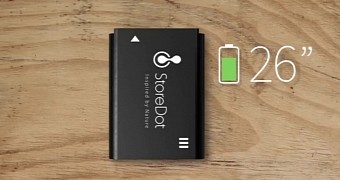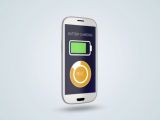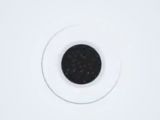With current technology reaching something of a limit, and even Moore's Law starting to show signs of an uncertain future, engineers are trying to score that big breakthrough that will usher in the age of superconductors. StoreDot is one of the names that could become very well known because of that.
Assuming it doesn't get bought out by some other, bigger name in the current technology field, as it often happens in capitalistic societies.
Then again, the company is based in Israel, not in the USA or some other region where hostile takeovers are the norm of the day, so it might not have as big concerns in that area.
StoreDot has something very interesting to show us all, something that could prove to be as revolutionary as graphene, if not more so.
Nanodots promise faster charging, smart displays, flash memory and image sensors
Smartphones, tablets, laptops and all other portable electronic devices are great, but they tend to deplete their internal power reserves really fast.
The best phones can lose their full battery charge in a day if you really use them, and it can take several hours for a recharge to be complete, even with the latest optimizations.
StoreDot says that its nanodots can allow smartphones to recharge in under a minute though, if you use them to create the battery instead of something conventional. And the charge should last longer too.
Not only that, but the Nanodots could be used to create smart graphics displays, image sensors, and flash memory solutions.
What the Nanodots really are
Essentially, they are bio-organic nano crystals with a diameter of 2 nanometers and made of bio-organic peptide molecules. The new material, with its new chemistry and new physics, can enhance the qualities of all applicable products mentioned before.
In a battery, the charge life is extended and the recharge time almost eliminated thanks to how it acts like a super-dense sponge that soaks up power. We'd be tempted to call it more of a capacitor than a battery really.
In displays, it can make colors more vivid while reducing power consumption. Efficiency benefits can be added to NAND storage as well, effectively making everything greener (in terms of environment friendliness).
Dr. Doron Myersdorf, CEO and former senior director for the SSD Business Unit of SanDisk, sees Nanodots in car batteries (chargeable in minutes instead of overnight) and many other things.
Practical applications should be revealed in a few months, since the research phase is complete. Making batteries small enough for a smartphone to actually use is the next step.
The only other drawback right now is the low number of charge cycles (how many times a battery can be recharged before it doesn't hold up under use anymore). Also, pricing will always be an issue compared to conventional phones (a hundred bucks / euro will have to be paid extra).

 14 DAY TRIAL //
14 DAY TRIAL // 




